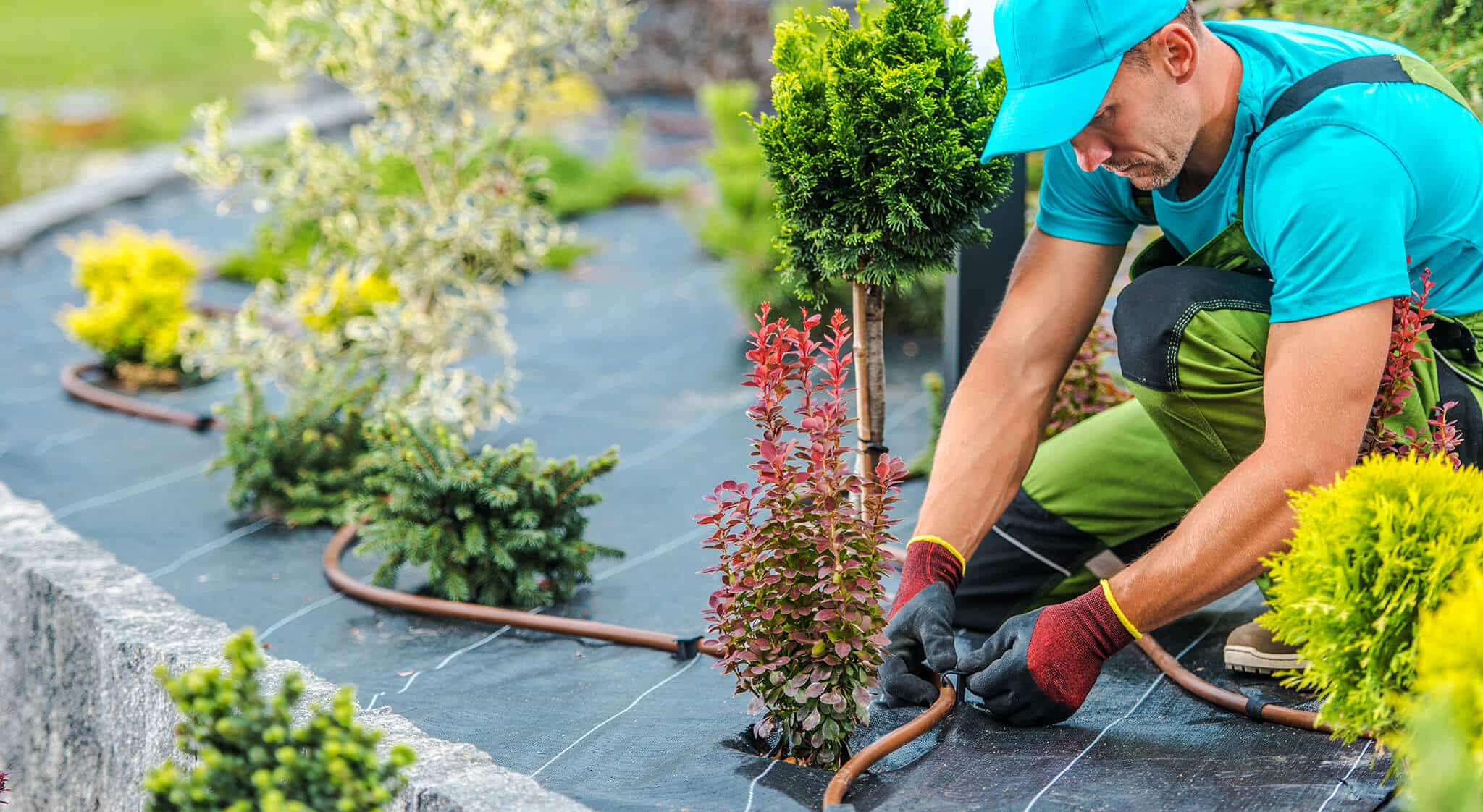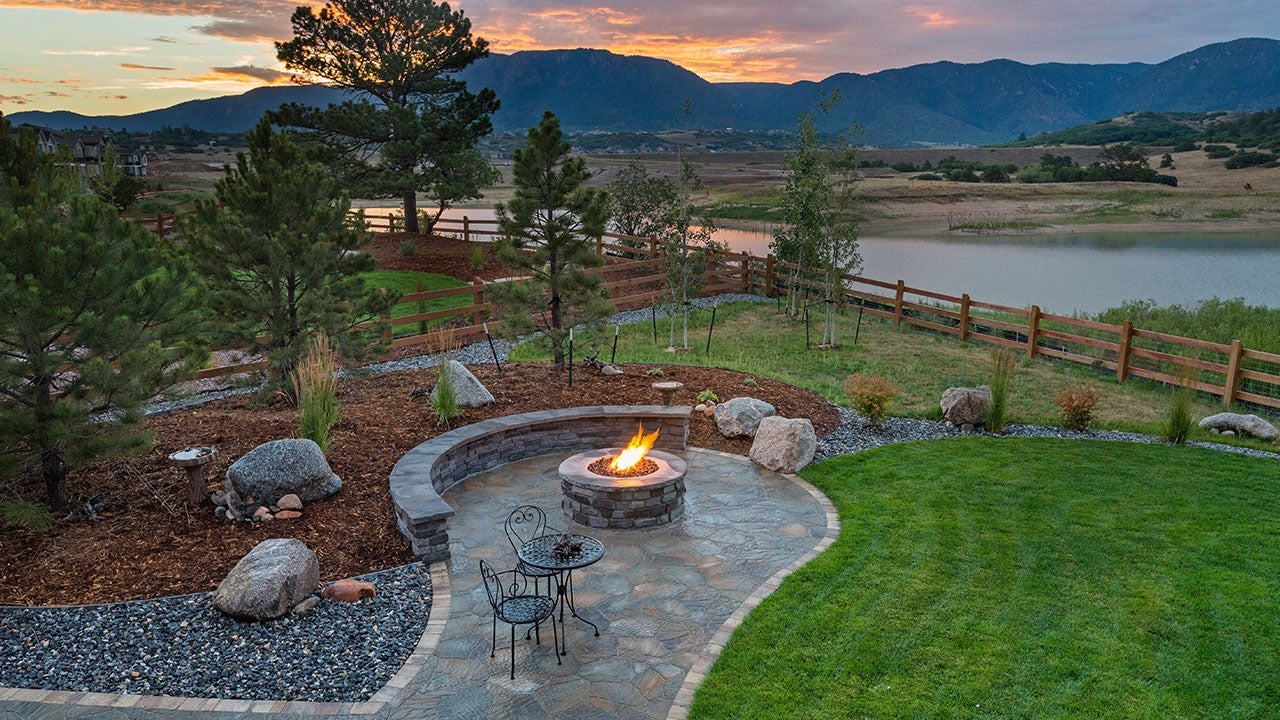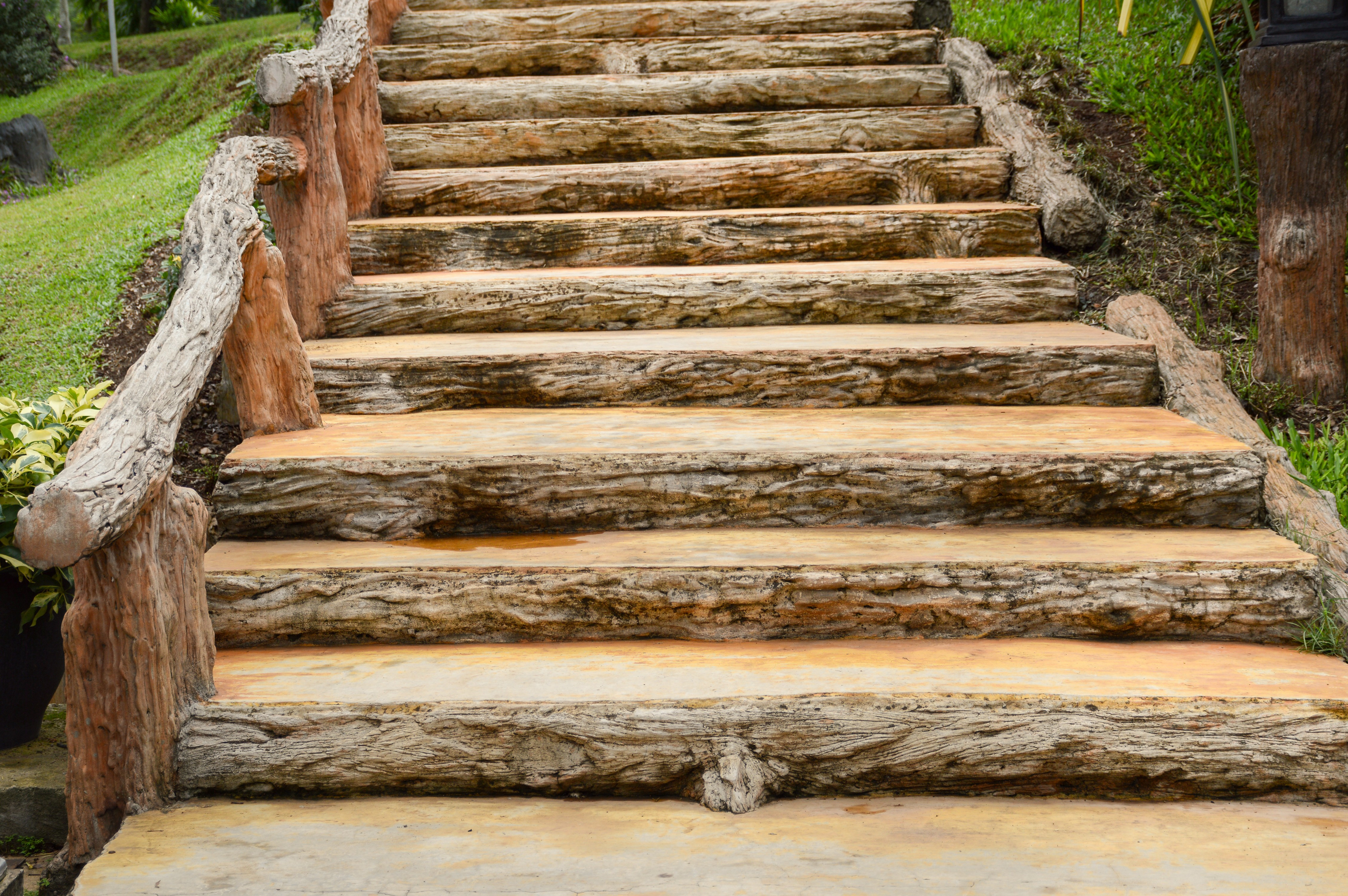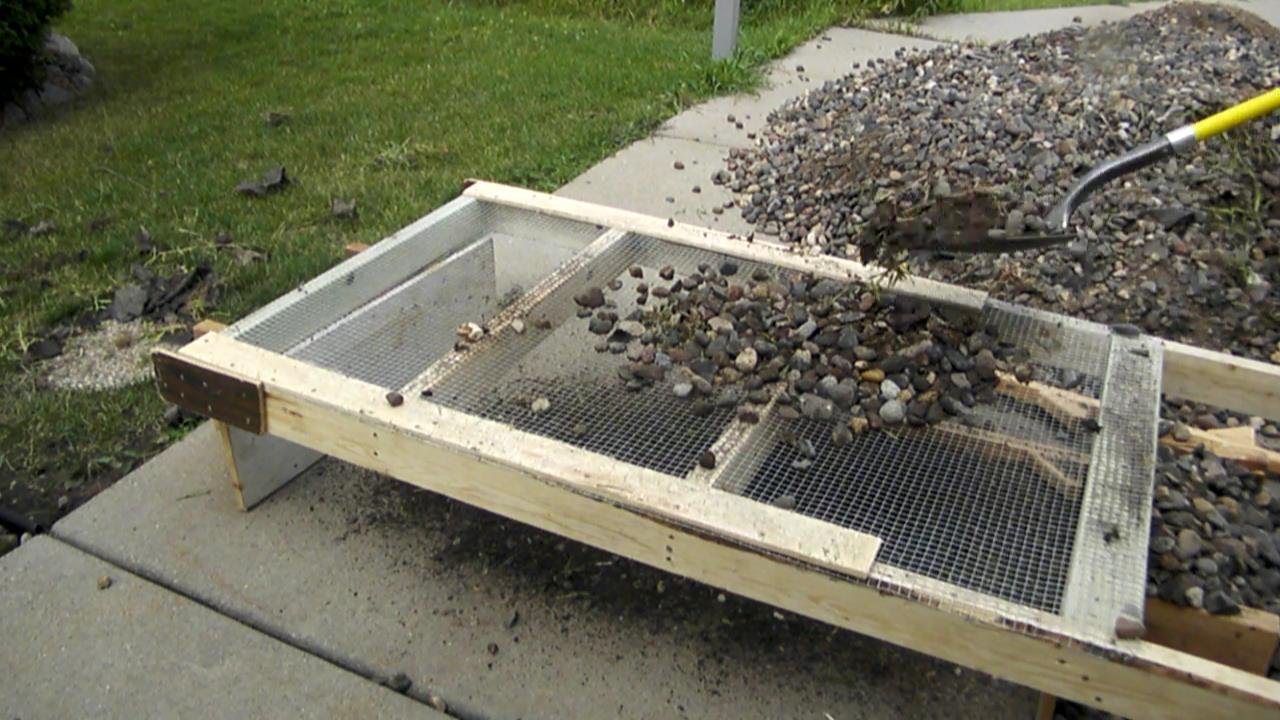Home>Garden Design>Planning Your Garden>How To Do Landscaping
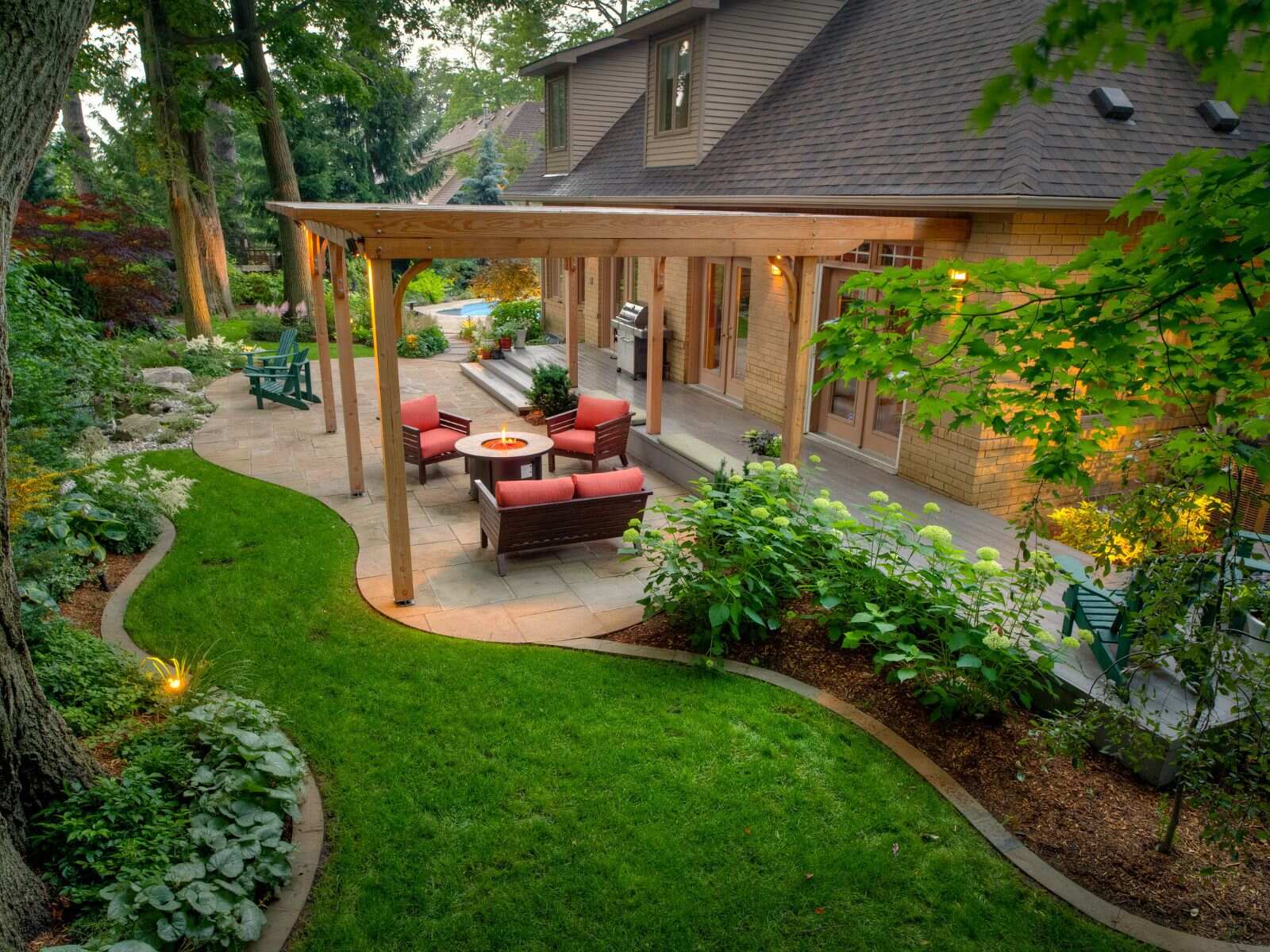

Planning Your Garden
How To Do Landscaping
Modified: February 10, 2024
Learn how to plan your garden with our comprehensive guide to landscaping. From design tips to plant selection, we've got you covered!
(Many of the links in this article redirect to a specific reviewed product. Your purchase of these products through affiliate links helps to generate commission for Chicagolandgardening.com, at no extra cost. Learn more)
Table of Contents
- Introduction
- Selecting the Right Plants
- Preparing the Soil
- Creating a Landscape Design
- Installing Hardscape Elements
- Planting and Mulching
- Watering and Irrigation Systems
- Maintaining a Healthy Landscape
- Enhancing with Outdoor Lighting
- Incorporating Sustainable Practices
- Troubleshooting Common Landscaping Issues
- Conclusion
Introduction
Welcome to the world of garden planning! Whether you have a small backyard or a sprawling landscape, planning your garden is an essential step towards creating a beautiful and functional outdoor space. A well-designed garden not only adds beauty to your home but also provides a peaceful retreat for you to relax and enjoy nature.
Planning a garden may seem like a daunting task, but with the right knowledge and guidance, it can be an enjoyable and rewarding experience. This article aims to provide you with the essential steps and tips to plan your garden effectively.
Before diving into the details, it’s important to understand that gardens are not just about planting flowers and shrubs. It’s a comprehensive process that involves careful selection of plants, preparation of the soil, designing the landscape, installing hardscape elements, proper watering and maintenance, and even incorporating sustainable practices into your gardening routine.
By following these steps, you can create a garden that reflects your personal style, maximizes the use of available space, and thrives in harmony with nature. Whether you’re a seasoned gardener looking for new ideas or a beginner ready to embark on your gardening journey, this guide will help you plan and create the garden of your dreams.
So, let’s get started on this exciting journey to transform your outdoor space into a vibrant and welcoming haven!
Selecting the Right Plants
When planning your garden, one of the first and most important steps is selecting the right plants. The plants you choose will determine the overall look and feel of your garden, as well as its ability to thrive in your specific climate and soil conditions.
Start by considering your personal preferences and the style of garden you want to create. Do you prefer a vibrant and colorful flower garden, a serene and tranquil Zen garden, or a lush and tropical oasis? Understanding your desired garden style will guide your plant selection process.
Next, take into account the local climate and weather patterns in your region. Certain plants thrive in specific climates, so it’s important to choose varieties that are well-suited to your area. Consider factors such as temperature, rainfall, and sunlight exposure when selecting plants.
Furthermore, assess your garden’s soil type and conditions. Different plants have different soil requirements, so it’s important to know whether your soil is sandy, clay-like, or loamy. You may need to amend the soil or choose plants that are tolerant of your existing soil conditions.
Another crucial aspect of plant selection is considering the maintenance requirements of each plant. Some plants are low-maintenance and require minimal care, while others may need regular pruning, fertilizing, or watering. Ensure that the plants you choose align with the amount of time and effort you’re willing to invest in their maintenance.
Lastly, diversity is key when selecting plants for your garden. Opt for a mix of annuals, perennials, shrubs, and trees to create layers of visual interest and provide habitats for various wildlife. This will also ensure that your garden remains vibrant and colorful throughout the year, with different plants blooming at different times.
Take your time to research and explore different plant options, and consider consulting with local gardening experts or nurseries for recommendations tailored to your specific needs. Remember, choosing the right plants is the foundation of a successful and vibrant garden!
Preparing the Soil
Preparing the soil is a crucial step in creating a thriving garden. Healthy soil provides essential nutrients and a conducive environment for plants to grow and thrive. Before planting, it’s important to assess and prepare your soil to ensure optimal conditions for your garden.
Start by testing the pH level of your soil. pH measures the acidity or alkalinity of the soil and different plants require different pH levels to thrive. You can purchase a pH testing kit from a garden center or use a soil testing service to determine the pH level of your soil. If your soil is too acidic or alkaline, you can make necessary adjustments by adding amendments such as lime or sulfur.
In addition to pH, it’s important to assess the texture and structure of your soil. Good soil should be well-draining, allowing excess water to flow away from the roots of your plants. If your soil is heavy clay or compacted, it may require loosening and amending with organic matter such as compost or peat moss to improve drainage and aeration.
Clear any weeds or debris from the soil surface before planting. Weeds compete with your plants for nutrients and resources, so it’s important to remove them to give your plants the best chance to thrive. You can manually remove weeds or use organic weed control methods such as mulching.
Adding organic matter to your soil is an excellent way to improve its fertility and structure. Organic matter, such as compost, decomposed leaves, or well-rotted manure, enriches the soil with essential nutrients and promotes beneficial microbial activity. Spread a layer of organic matter over your soil and mix it in to a depth of at least six inches to improve its overall quality.
Lastly, consider the importance of soil moisture in maintaining plant health. Adequate water retention is crucial for your plants’ growth, so ensure that your soil has good water-holding capacity. Organic matter and mulching can help retain moisture, while proper irrigation methods will ensure that your plants receive the right amount of water.
By taking the time to prepare your soil properly, you will create a foundation for healthy growth and abundant harvest in your garden. Remember, well-prepared soil sets the stage for a thriving garden!
Creating a Landscape Design
Creating a well-thought-out landscape design is an essential step in planning your garden. A good design not only enhances the beauty of your outdoor space but also maximizes its functionality and usability. It brings together various elements such as plants, pathways, structures, and focal points to create a cohesive and visually appealing garden.
Start by assessing the shape, size, and topography of your garden. Consider any existing features, such as trees, natural slopes, or water bodies, that can be incorporated into your design. This will help you work with the existing elements and create a design that complements the natural surroundings.
Next, determine the purpose and theme of your garden. Do you want a formal, symmetrical design or a more relaxed and informal layout? Consider how you plan to use your garden – whether it’s for entertaining, relaxation, or growing vegetables – and let that guide your design decisions.
Think about the flow and organization of your garden. Create separate zones or areas for different activities, such as a seating area, a play area for children, a vegetable garden, or a space for contemplation. Plan pathways and walkways to connect these areas and provide easy navigation throughout the garden.
Consider incorporating focal points or eye-catching elements into your design. These could be a beautiful sculpture, a water feature, a pergola, or a well-placed plant specimen. Focal points draw the eye and create a sense of interest and visual balance in the garden.
When selecting plants for your design, consider their size, shape, color, and texture. Create layers and varying heights by combining different plant types, such as tall shrubs, medium-sized perennials, and ground-cover plants. Choosing plants with different blooming seasons ensures that your garden remains vibrant throughout the year.
Don’t forget about the hardscape elements in your design, such as pathways, patios, and fences. Use materials that complement the overall style of your garden and ensure that they are durable and low-maintenance. Incorporating seating areas or outdoor furniture adds functionality and creates comfortable spaces for relaxation.
Lastly, remember that your landscape design is not static and can evolve over time. As your garden grows and matures, you may want to make adjustments or additions. Be open to experimentation and enjoy the process of creating a unique and personalized landscape design.
So, unleash your creativity and let your imagination run wild as you design a garden that truly reflects your style and brings joy to your outdoor space!
Installing Hardscape Elements
In addition to plants and greenery, hardscape elements play a crucial role in enhancing the functionality and aesthetic appeal of your garden. Hardscape elements refer to the non-living components such as pathways, patios, fences, walls, and structures that are installed in your garden. These elements provide structure, define spaces, and add visual interest to your outdoor space.
Before installing hardscape elements, it’s important to have a clear understanding of your garden design and layout. Consider how you plan to use each area of your garden and identify where hardscaping is necessary. For example, if you have a dining area, you may want to install a patio or deck.
Pathways are a common hardscape feature that provide functional and aesthetic benefits. They help guide movement throughout the garden, create focal points, and define different areas. Choose materials such as natural stone, pavers, or gravel that complement your overall design and are durable enough to withstand foot traffic.
Patios and decks are popular additions that extend your living space into the outdoors. They provide a space for relaxation, entertaining, and outdoor dining. Consider factors such as size, shape, and location when planning your patio or deck. Select materials that are weather-resistant and easy to maintain.
Fences and walls not only provide privacy but also serve as a design element in your garden. Depending on your style and needs, you can choose from various materials such as wood, metal, or stone. Consider the height and design of the fence or wall to ensure it blends harmoniously with the overall garden aesthetic.
Structures such as pergolas, arbors, and gazebos add dimension and visual interest to your garden. They provide shade, create focal points, and serve as a backdrop for climbing plants. Carefully select the location and design of these structures, making sure they complement the overall garden design.
When installing hardscape elements, it’s important to follow proper installation techniques and guidelines. If you’re not confident in your DIY skills, consider hiring a professional to ensure the elements are installed correctly and safely.
Keep in mind that hardscape elements should not overpower the greenery in your garden. Strike a balance between the hardscape and softscape elements to create a harmonious and inviting outdoor space.
By thoughtfully integrating hardscape elements into your garden design, you can transform it into a functional and visually appealing oasis that reflects your personal style and enhances your outdoor living experience.
Planting and Mulching
Once you have selected the right plants and prepared the soil, it’s time to start planting and mulching in your garden. Planting involves placing your chosen plants in the ground, while mulching helps to protect your plants and improve soil health.
Before planting, it’s important to consider the spacing requirements for each plant. Follow the recommended spacing guidelines to ensure that your plants have enough room to grow and flourish. Dig a hole that is deep and wide enough to accommodate the root ball of the plant, and gently place the plant into the hole. Backfill the hole with soil, firm it around the plant, and water thoroughly to settle the soil.
When planting, keep in mind the growth habits of your plants and their placement in your garden. Place taller plants towards the back of the garden beds and shorter ones towards the front to create depth and interest. Group plants with similar water and light requirements together for easier maintenance.
Mulching is an essential step in gardening as it has numerous benefits for your plants and soil. Apply a layer of organic mulch, such as wood chips, straw, or leaves, around your plants. Mulch helps to conserve moisture in the soil by reducing evaporation, suppresses weed growth by blocking sunlight, and regulates soil temperature.
In addition, mulch gradually breaks down and adds organic matter to the soil, enhancing its fertility and structure over time. It also acts as a protective barrier, preventing soil erosion and reducing the impact of heavy rain on the soil surface.
When mulching, ensure that you leave a gap around the base of the plant to prevent moisture buildup and potential rotting. Apply a layer of mulch about two to four inches deep, taking care to keep it away from the stems of plants. Be mindful not to over mulch, as excessive mulch can lead to root suffocation and other issues.
Regularly monitor your plants after planting and mulching. Water your plants as needed, following the specific watering requirements of each plant. During the first few weeks after planting, pay extra attention and water more frequently to help the plants establish their roots in the soil.
Remember to periodically check for any signs of pests or diseases and take appropriate measures to mitigate any problems. Maintain the cleanliness and health of your garden by removing any dead or faded foliage and flowers.
By carefully planting your selected plants and using mulch to provide them with the ideal growing conditions, you are setting the stage for a thriving and beautiful garden.
Watering and Irrigation Systems
Proper watering is vital for the health and vitality of your garden. It’s important to provide your plants with the right amount of water at the right time to ensure optimal growth and prevent issues such as underwatering or overwatering.
One of the best ways to ensure efficient and effective watering is by installing an irrigation system. Irrigation systems help automate the watering process, saving you time and ensuring that your plants receive water consistently and evenly.
There are several types of irrigation systems to choose from, including drip irrigation, sprinkler systems, and soaker hoses. Each system has its own benefits and considerations, so it’s important to select one that suits your garden’s specific needs.
Drip irrigation systems are especially efficient as they deliver water directly to the plant’s root zone, minimizing water loss through evaporation or runoff. This method also helps to prevent weed growth as the water is delivered only to the areas where plants are located.
Sprinkler systems, on the other hand, are ideal for larger areas or lawns. They provide a wide coverage and can be automated with timers for convenient watering. However, be mindful of water evaporation and potential overspray, which may lead to inefficient water usage.
Soaker hoses are another option, particularly suitable for flower beds or vegetable gardens. These hoses release water slowly and directly into the soil, ensuring deep root penetration and minimal water waste.
When setting up your irrigation system, consider the specific water requirements of your plants. Different plants have different needs, so it’s important to group plants with similar water requirements together to ensure efficient watering.
In addition to an irrigation system, it’s important to monitor and adjust the frequency and duration of watering based on weather conditions. During hot and dry periods, you may need to increase the frequency of watering, while cooler and rainy periods may call for decreased water application.
Regularly inspect your irrigation system for any leaks, clogs, or malfunctions. Make necessary adjustments to ensure optimal water distribution and prevent water wastage.
It’s also worth considering water conservation practices in your garden. Collecting rainwater in barrels or using greywater from your household can help minimize water usage and reduce the strain on local water resources.
By implementing an efficient and properly maintained irrigation system, you can ensure that your plants receive adequate water, promoting healthy growth and a thriving garden for years to come.
Maintaining a Healthy Landscape
Maintaining a healthy landscape is key to ensuring the long-term success and beauty of your garden. Regular care and maintenance activities help keep your plants thriving, prevent pest and disease issues, and maintain the overall aesthetic appeal of your outdoor space.
One of the most important maintenance tasks is watering. Monitor the moisture levels of your soil and water your plants accordingly. Avoid overwatering, as it can lead to root rot and other issues. Apply water at the base of the plants to ensure it reaches the root zone effectively, rather than wasting it on the foliage or surrounding areas.
Weeding is another essential aspect of landscape maintenance. Keep an eye out for weeds and promptly remove them before they have a chance to compete with your plants for nutrients and space. Regular weeding will help keep your garden beds neat and healthy.
Pruning is a necessary task to maintain the shape and health of your plants. Regularly trim away dead or damaged branches to promote new growth and prevent the spread of diseases. Pruning also helps maintain the desired size and form of your shrubs and trees.
Fertilizing your plants is vital to provide them with the necessary nutrients for optimal growth. Choose a suitable fertilizer based on the specific needs of your plants and follow the recommended application rates. Organic fertilizers, such as compost or well-rotted manure, are a more sustainable and environmentally friendly choice.
Regularly inspect your plants for any signs of pests or diseases. Early detection is key to preventing the spread and damage caused by these issues. Take appropriate measures, such as using natural remedies or seeking professional help, to address pest and disease problems effectively and minimize their impact on your garden.
Properly maintaining your lawn is also crucial for a healthy landscape. Regular mowing, aerating, and dethatching can help promote healthy grass growth and prevent the accumulation of thatch. Additionally, consider using organic weed controls and practicing responsible pesticide use to minimize harm to the environment.
Mulching is not only beneficial at the time of planting but should also be refreshed periodically. Add a layer of mulch around your plants to help conserve soil moisture, suppress weed growth, and provide insulation for the root systems. Ensure you maintain the proper thickness and distance between the mulch and the plant stems.
Lastly, regularly assess the health and condition of your hardscape elements. Repair any cracks, repaint structures if necessary, and ensure that pathways and structures are safe and functional. Cleaning and maintaining your hardscape will not only enhance the aesthetics of your garden but will also prolong their lifespan.
By following a regular maintenance routine and addressing any issues promptly, you can ensure that your landscape remains healthy, beautiful, and a source of pride and enjoyment for years to come.
Enhancing with Outdoor Lighting
Outdoor lighting is an essential aspect of landscape design, as it not only adds functionality but also enhances the beauty and ambiance of your garden. Well-planned and strategically placed lighting can create a captivating and inviting atmosphere for nighttime enjoyment.
When considering outdoor lighting, start by identifying the key areas or features you want to highlight in your garden. This could be a focal point like a beautiful tree, a garden sculpture, or a water feature. By installing spotlights or uplights, you can draw attention to these elements and create a focal point that stands out in the darkness.
Pathway lighting is another important aspect of outdoor lighting. Illuminate pathways and walkways with low-level lighting to enhance safety and guide visitors through your garden. Choose fixtures that blend with the overall design and provide enough light for easy navigation without overpowering the surrounding areas.
Accent lighting can be used to highlight specific areas or architectural features, such as walls, pergolas, or outdoor seating areas. Adding soft, indirect lighting can create a cozy and intimate atmosphere, perfect for entertaining or relaxation. Consider using string lights, lanterns, or wall sconces to create a warm and inviting ambiance.
Consider the type of lighting fixtures that best suit your garden style and needs. There are various options available, including LED lights, solar-powered lights, and traditional halogen lights. LED lights are energy-efficient and long-lasting, while solar-powered lights are environmentally friendly and require minimal maintenance.
It’s important to strike a balance between functional and aesthetic lighting. While the primary purpose of outdoor lighting is to provide visibility and safety, it should also enhance the overall beauty of your garden. Use a combination of spotlights, floodlights, and well-placed fixtures to create an appealing and harmonious lighting scheme.
Don’t forget about energy efficiency when selecting outdoor lighting. Opt for low voltage or solar-powered options to reduce energy consumption and save on electricity bills. Additionally, consider using timers or motion sensors to control the operation of your outdoor lights, ensuring they are only active when needed.
Regularly inspect and maintain your outdoor lighting system, ensuring that fixtures are clean, bulbs are functioning properly, and any damaged components are replaced. Adjust the angle and position of lights as your garden changes and grows over time.
Remember to take into account the dark sky guidelines in your area, as excessive and misdirected outdoor lighting can contribute to light pollution. Be respectful of your surroundings and ensure that your lighting does not negatively impact the environment or disturb your neighbors.
With the right outdoor lighting, you can extend the usability and visual appeal of your garden well into the night, providing a magical and enchanting atmosphere for outdoor gatherings and peaceful evenings under the stars.
Incorporating Sustainable Practices
In today’s world, incorporating sustainable practices into our daily lives, including in our gardens, is more important than ever. By adopting environmentally-friendly techniques and practices, we can create a garden that not only looks beautiful but also contributes to the well-being of our planet. Here are some sustainable practices to consider:
1. Water Conservation: Minimize water waste by using efficient irrigation systems such as drip irrigation, which delivers water directly to the plant roots. Collect rainwater using barrels or install a rainwater harvesting system to reduce reliance on municipal water sources.
2. Native and Drought-Resistant Plants: Choose plants that are native to your region, as they are well-adapted to the local climate and require less water and maintenance. Additionally, opt for drought-resistant varieties that can thrive with minimal watering.
3. Organic Gardening: Embrace organic gardening practices by avoiding chemical pesticides and synthetic fertilizers. Instead, use natural methods like companion planting, crop rotation, and organic pest control to maintain a healthy and balanced garden ecosystem.
4. Composting: Start a compost pile or use a compost bin to recycle organic kitchen waste and garden trimmings. The rich compost produced can be used to enrich the soil, reduce the need for synthetic fertilizers, and promote the growth of healthy plants.
5. Mulching: Apply organic mulch around plants to conserve moisture, suppress weeds, and improve the health of the soil. Mulch also helps regulate soil temperature and reduces the need for frequent watering.
6. Wildlife-Friendly Practices: Create habitats for beneficial insects, birds, and other wildlife by incorporating native plants, providing water sources, and leaving areas of your garden undisturbed. This helps promote biodiversity and supports the natural ecosystem.
7. Sustainable Materials: When constructing hardscape elements or adding structures to your garden, opt for sustainable materials such as reclaimed wood, recycled plastic, or locally sourced stone. These materials have a lower environmental impact and promote responsible resource management.
8. Energy-Efficient Lighting: Use energy-efficient LED lighting fixtures for outdoor lighting. LED lights consume less energy, have a longer lifespan, and produce less heat compared to traditional lighting options.
9. Reduce, Reuse, Recycle: Practice responsible waste management by reducing the use of single-use plastics and recycling materials whenever possible. Incorporate recycled or repurposed materials into your garden design to minimize waste.
10. Education and Community: Share your sustainable gardening practices with others and encourage your community to adopt environmentally-friendly habits. Participate in local gardening groups or educational programs to learn from and inspire others.
By incorporating these sustainable practices into your garden, you can create a beautiful and eco-friendly space that supports the well-being of the planet and future generations.
Troubleshooting Common Landscaping Issues
Landscaping, like any other form of gardening, can come with its fair share of challenges. However, with patience and the right knowledge, you can overcome these common landscaping issues and ensure the success of your garden. Here are some solutions to help you troubleshoot and tackle these challenges:
1. Weeds: Unwanted weeds can invade your garden and compete with your plants for nutrients and resources. Regularly weed your garden beds, removing them by hand or using organic weed control methods. Applying a layer of mulch can help suppress weed growth and make weeding easier.
2. Pests: Insects, diseases, and other pests can damage your plants and hinder their growth. Identify the specific pest or disease affecting your garden and take appropriate measures to address the problem. This can include using natural pest control remedies, introducing beneficial insects, or consulting with a local garden center for advice.
3. Poor Drainage: Excessive waterlogged soil can lead to root rot and other issues. Improve drainage by adding organic matter to the soil, creating raised beds, or installing drainage systems if necessary. Avoid overwatering and ensure that water is able to drain freely from your garden beds.
4. Sun and Shade Issues: Different plants have varying sunlight requirements. Ensure that your garden beds receive adequate sunlight or shade based on the needs of your plants. If you have limited sunlight, choose shade-tolerant plants and consider using reflective surfaces or mirrors to redirect sunlight into shaded areas.
5. Soil Nutrient Imbalance: Imbalanced soil nutrients can negatively impact plant health and growth. Test your soil regularly and amend it based on the specific nutrient deficiencies or imbalances. Adding organic matter or using organic fertilizers can help provide essential nutrients to the soil.
6. Overgrown Plants: Over time, some plants may outgrow their designated spaces, leading to crowding and uneven growth. Regularly prune and trim your plants to maintain their desired shape and size. This not only enhances their appearance but also promotes better air circulation and reduces the risk of diseases.
7. Lack of Color and Visual Interest: If your garden lacks color or visual interest, consider adding flowering plants, ornamental grasses, or plants with vibrant foliage. Incorporate a variety of plants with different bloom times to ensure there is always something in bloom throughout the year. Include elements such as decorative containers, garden art, or focal points to add visual interest.
8. Soil Erosion: Erosion can be a concern, especially on sloped landscapes. To prevent soil erosion, add groundcover plants, install retaining walls or terraces, and apply mulch or erosion control matting to hold the soil in place. Conserving water and reducing heavy runoff by capturing rainwater can also help combat erosion.
9. Lack of Privacy: If you desire privacy in your outdoor space, consider planting tall trees, shrubs, or installing privacy screens or fences. These elements can help create a sense of seclusion and block unwanted views.
10. Lack of Maintenance: Neglecting regular maintenance can lead to a decline in the health and appearance of your landscape. Stay on top of routine tasks such as watering, pruning, weeding, and fertilizing. Regularly inspect your garden for any signs of issues and address them promptly to prevent further damage.
By addressing these common landscaping issues in a timely and proactive manner, you can maintain a healthy and vibrant garden that brings you joy and satisfaction throughout the seasons.
Conclusion
Congratulations on completing this comprehensive guide to planning your garden! By following the steps and tips shared throughout this article, you now have the knowledge and tools to create a beautiful and thriving outdoor space that reflects your personal style and enhances your enjoyment of nature.
From selecting the right plants and preparing the soil to creating a well-designed landscape and incorporating sustainable practices, every aspect of garden planning plays a crucial role in the success of your garden. Remember to consider your local climate, soil conditions, and the specific needs of your plants to ensure their optimal growth.
Regular maintenance, including watering, pruning, and addressing common landscaping issues, is essential to keeping your garden healthy and vibrant. Monitor the health of your plants, be mindful of water usage, and incorporate eco-friendly practices to minimize your impact on the environment.
Lastly, don’t forget to enjoy the process of planning and creating your garden. Gardening is a rewarding and fulfilling hobby that allows you to connect with nature, beautify your surroundings, and create a peaceful retreat in your own backyard.
As you embark on this garden planning journey, be open to experimentation and adapt your garden as it evolves and matures. Remember that gardening is a continuous learning experience, and your garden will grow and change alongside you.
So, roll up your sleeves, grab your gardening tools, and let your creativity bloom as you transform your outdoor space into a haven of beauty, tranquility, and sustainability. Happy gardening!
